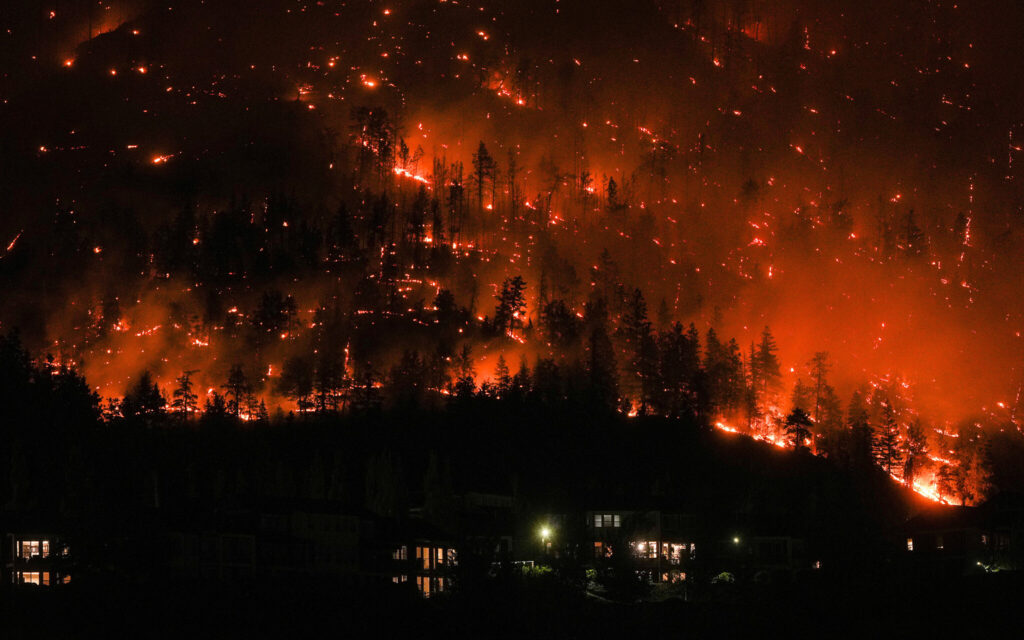Yellowknife’s Resilience in the Face of Canada Wildfires – Responding to Crisis

Responding to Crisis Yellowknife's Resilience in the Face of Canada Wildfires
Introduction
As wildfires continue to threaten communities around the world, the recent news of all 20,000 Yellowknife residents evacuating due to an ongoing wildfire crisis underscores the urgency of preparedness and the remarkable resilience of communities in times of adversity.
This article delves into the unfolding situation in Yellowknife, examines the response strategies employed to ensure the safety of its residents, and highlights the importance of proactive measures and cooperation in mitigating the impact of natural disasters.
Understanding the Wildfire Crisis
Wildfires are a recurring natural phenomenon, particularly in regions with dry climates. Yellowknife, the capital of Canada’s Northwest Territories, is no stranger to the threat of wildfires. These intense fires can spread rapidly, fueled by dry vegetation, high winds, and extreme temperatures. The recent wildfire outbreak has prompted authorities to take swift action to protect the lives and property of Yellowknife’s residents.
Evacuation: A Proactive Approach
The decision to evacuate all 20,000 Yellowknife residents is a testament to the seriousness of the situation and the commitment to ensuring public safety. Evacuation measures are vital to prevent loss of life and provide emergency responders with the space and resources needed to contain the fires. While evacuations can be challenging and disruptive, they are a crucial step in minimizing the impact of natural disasters.
Collaborative Action and Organized Responses
In the face of such crises, a well-coordinated response is essential. Local authorities, emergency services, and government agencies work together to manage evacuations, provide shelter, and disseminate information to residents. The involvement of community organizations, volunteers, and neighboring communities can also play a pivotal role in ensuring the smooth execution of evacuation plans.
Promoting Public Understanding and Effective Communication
Effective communication is at the heart of any successful disaster response. Public awareness campaigns, early warnings, and real-time updates are vital in ensuring residents are informed about evacuation procedures, safety measures, and the status of the wildfire situation. Social media, local news outlets, and government websites serve as critical platforms for disseminating accurate and timely information.
Community Resilience
The evacuation of an entire city is a stark reminder of the vulnerability of human settlements to the forces of nature. However, it also showcases the resilience and determination of communities to come together and face adversity head-on. The solidarity demonstrated by Yellowknife’s residents, as well as the support extended by neighboring communities, illustrates the power of collective action in times of crisis.
Lessons for the Future
The Yellowknife wildfire crisis holds valuable lessons for communities worldwide, particularly those at risk of wildfires and other natural disasters. Preparedness plans, including regular drills, clear evacuation routes, and designated shelters, are essential to ensure a swift and organized response. Collaborative partnerships between local, regional, and national authorities bolster resilience and resource allocation during emergencies.
Climate Change and Wildfires
The intensification of wildfires in various parts of the world has been linked to climate change. Rising temperatures, prolonged droughts, and changing precipitation patterns create conditions conducive to the rapid spread of wildfires. As governments and communities address the immediate challenges posed by wildfires, the broader conversation about mitigating climate change and adopting sustainable practices gains even greater significance.
Conclusion
The evacuation of all 20,000 Yellowknife residents due to ongoing wildfires underscores the urgency of disaster preparedness and the resilience of communities facing adversity. The response efforts of local authorities, emergency services, and the community at large highlight the importance of proactive measures, coordinated responses, and effective communication in times of crisis.
As the world continues to grapple with the impact of climate change, the Yellowknife wildfire crisis serves as a poignant reminder of the need for global cooperation and sustainable practices to safeguard communities from the growing threat of natural disasters.
For More Related Articles Browse Our Website Blogster.pk
For social Connection You can also Visit and follow our Social media Platforms
Facebook , Instagram, Linkedin, Pinterest, Quora, Twitter, Youtube.







